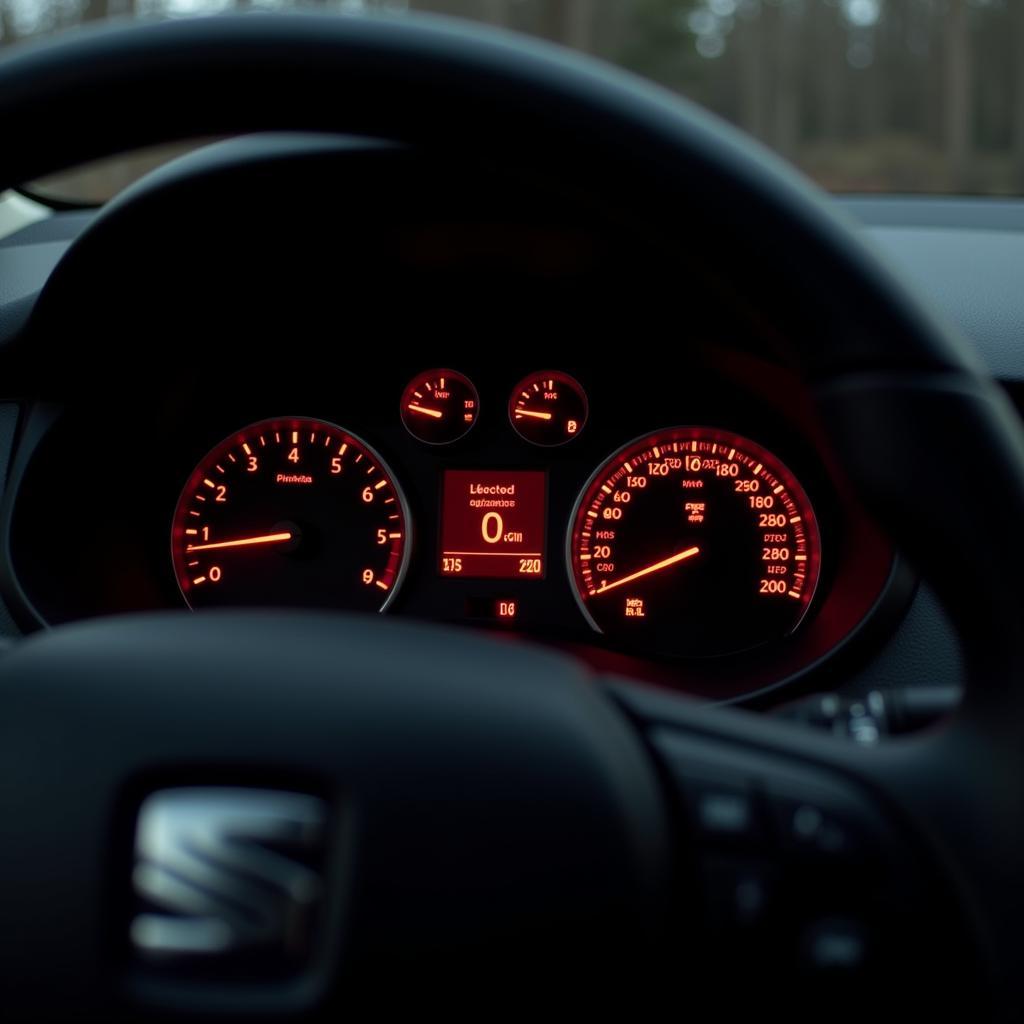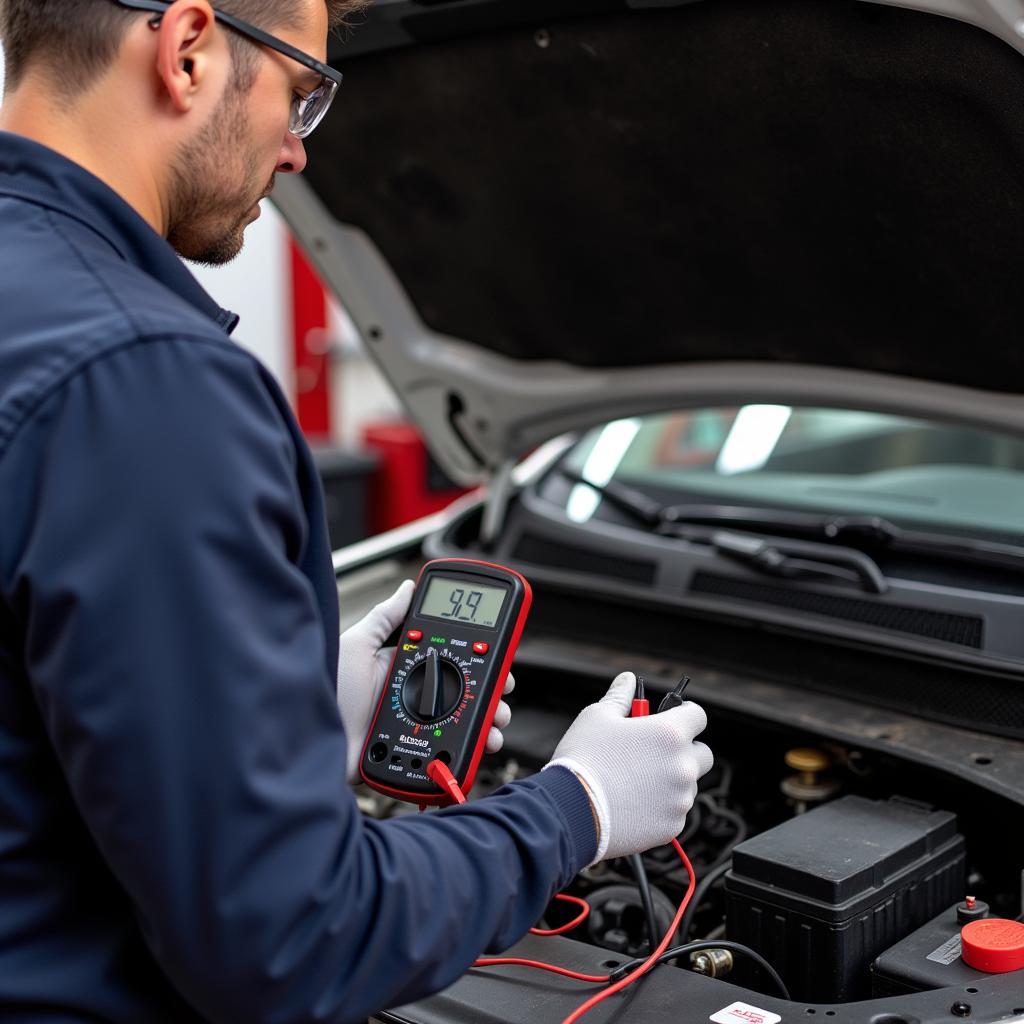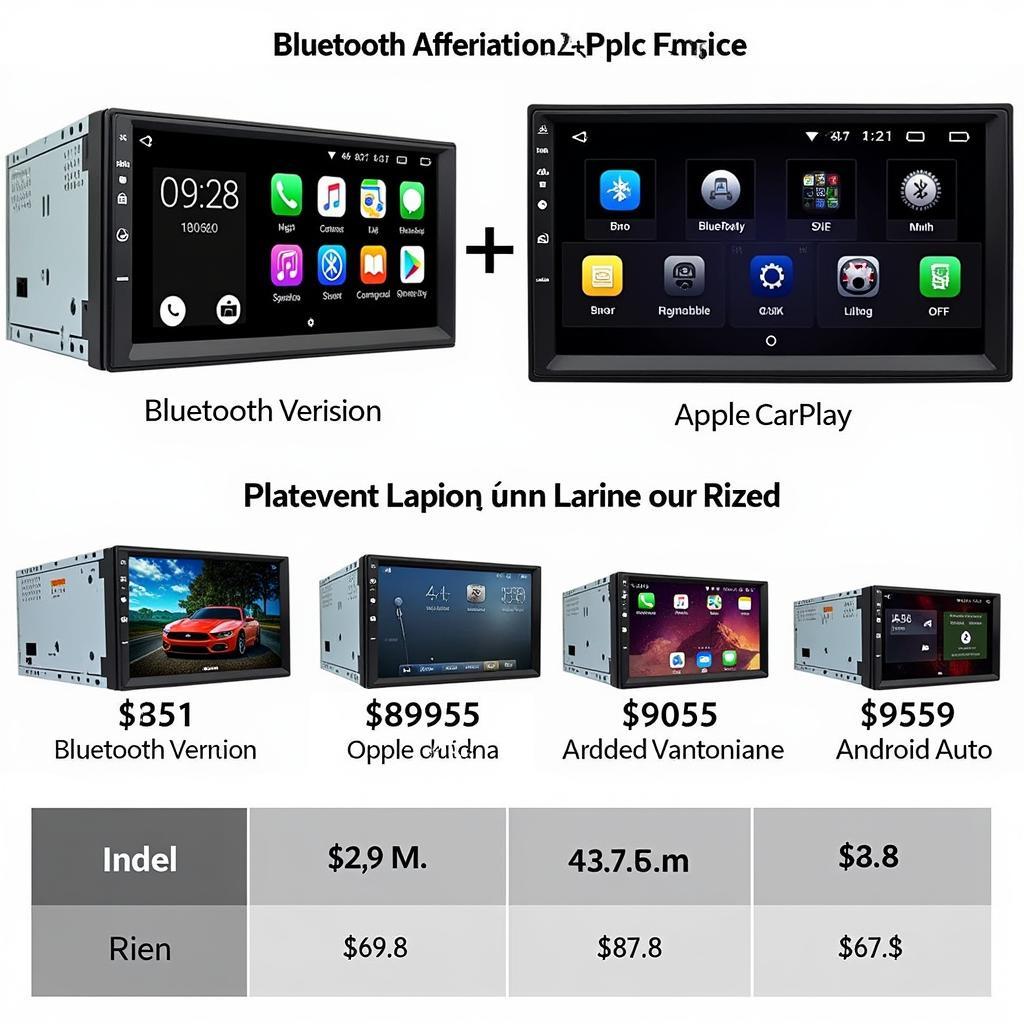Driving a Seat Ibiza is usually a smooth and enjoyable experience, but what happens when a warning light suddenly illuminates on your dashboard? Your heart might skip a beat, and rightfully so. Dashboard warning lights are your car’s way of communicating that something needs attention. Ignoring them could lead to further damage, costly repairs, or even compromise your safety.
This comprehensive guide will walk you through the most common warning lights on a Seat Ibiza, their meanings, and what actions to take when you see them.
Understanding Your Seat Ibiza Dashboard Lights
The variety of warning lights on a Seat Ibiza’s dashboard can seem overwhelming, but they are categorized by color, each indicating a different level of urgency:
- Red Warning Lights: These signals require immediate attention. Stop driving as soon as safely possible and consult your owner’s manual or a mechanic.
- Yellow/Amber Warning Lights: These indicate a potential issue that needs addressing. While you might not need to stop immediately, schedule a check-up with a trusted mechanic soon.
- Green/Blue Lights: These are purely informational, indicating an active system like your headlights or turn signals.
 Seat Ibiza Dashboard Warning Lights
Seat Ibiza Dashboard Warning Lights
Common Seat Ibiza Warning Lights and Their Meanings
Let’s decode some of the most frequently encountered warning lights on a Seat Ibiza:
Engine Warning Light
Appearance: This light usually resembles a stylized engine block.
Meaning: A yellow or amber engine light often signals an issue with the engine management system, which could be anything from a faulty sensor to a more serious problem.
What to do: If the light is yellow, get your car checked by a mechanic soon. If it’s red and flashing, or accompanied by unusual noises or smoke, pull over immediately and turn off the engine.
seat ibiza diesel warning lights
Oil Pressure Warning Light
Appearance: This light looks like a traditional oil can.
Meaning: A red oil can symbol indicates low oil pressure, which can cause significant engine damage if ignored.
What to do: Stop driving immediately and check your oil level. If it’s low, top it up. If the light persists, it’s best to call for a tow to a mechanic.
Battery Charge Warning Light
Appearance: This light usually looks like a car battery with positive (+) and negative (-) terminals.
Meaning: If this light is on, it means your car’s battery is not charging properly. This could be due to a faulty alternator, a loose battery connection, or a problem with the charging system.
What to do: If the light is on while driving, turn off any unnecessary electrical components like the radio and air conditioning. Try to make it to a safe location and contact a mechanic.
Brake System Warning Light
Appearance: This light often resembles a circle with an exclamation mark (!) inside.
Meaning: This light can indicate several issues, including low brake fluid, a problem with the ABS (Anti-lock Braking System), or a fault with the electronic parking brake.
What to do: If this light comes on, especially if the brake pedal feels spongy or unresponsive, pull over immediately when safe and contact a mechanic.
Coolant Temperature Warning Light
Appearance: This light usually looks like a thermometer submerged in liquid.
Meaning: A blue light indicates the engine is still warming up. If it turns red, your engine is overheating, potentially due to a coolant leak, a faulty thermostat, or a problem with the radiator fan.
What to do: If your engine overheats, pull over as soon as possible, turn off the engine, and allow it to cool down before checking the coolant level. It’s crucial not to remove the radiator cap while the engine is hot.
Tire Pressure Monitoring System (TPMS) Warning Light
Appearance: This light usually looks like a tire cross-section with an exclamation mark (!) inside.
Meaning: The TPMS light indicates low tire pressure in one or more tires.
What to do: Find a safe location to stop and check your tire pressure. Inflate the tires to the recommended pressure (found in your owner’s manual or on a sticker inside the driver’s side door jamb).
Remote Diagnostics and Software Solutions
Advancements in automotive technology have paved the way for remote diagnostics and software solutions to address certain car issues, including some that trigger warning lights.
How it works: Using specialized software and equipment, skilled technicians can remotely access your Seat Ibiza’s onboard computer system, retrieve diagnostic trouble codes, analyze data, and even upload software updates or recalibrate certain components.
Benefits: This technology offers convenience, faster diagnoses, and potential cost savings compared to traditional mechanic visits. However, it’s essential to choose a reputable provider with certified technicians and secure data handling practices.
“Remote diagnostics helped me quickly identify a sensor issue that was triggering my engine warning light,” says John S., a Seat Ibiza owner from London. “The technician remotely recalibrated the sensor, and my car was back to normal without needing a tow or a lengthy workshop visit.”
Conclusion
While warning lights on your Seat Ibiza’s dashboard can be unnerving, understanding their meanings and taking appropriate action can save you from potentially costly repairs and stressful situations. Remember, routine maintenance, regular inspections, and addressing warning lights promptly are key to enjoying a safe and reliable driving experience with your Seat Ibiza.
If you’re ever unsure about a warning light, consult your owner’s manual or contact a qualified mechanic. Stay safe and enjoy the ride!
FAQs about Warning Lights on a Seat Ibiza
1. Can I keep driving with a warning light on?
It depends on the color and the specific light. Red lights require immediate attention, while yellow lights suggest you should seek a mechanic soon. Never ignore a warning light.
2. What if a warning light comes on and then disappears?
Even if a warning light is temporary, it’s essential to have your car checked for potential underlying issues.
3. Can extreme temperatures affect warning lights?
Yes, extreme temperatures can sometimes cause sensors to malfunction, potentially triggering warning lights.
4. Where can I find more information about my specific Seat Ibiza model?
Your owner’s manual is the best resource for detailed information about your car’s warning lights and their meanings.
5. How often should I have my Seat Ibiza serviced?
Follow the recommended service schedule in your owner’s manual. Regular servicing helps prevent issues and catch potential problems early.
6. What is the difference between an engine warning light and an oil pressure warning light?
The engine warning light can indicate a broad range of issues within the engine management system, while the oil pressure warning light specifically indicates low oil pressure, which can lead to severe engine damage.
7. Are there mobile mechanics who can address warning light issues?
Yes, many mobile mechanics are equipped to diagnose and address warning light issues at your location, offering added convenience. Be sure to choose a reputable provider.



